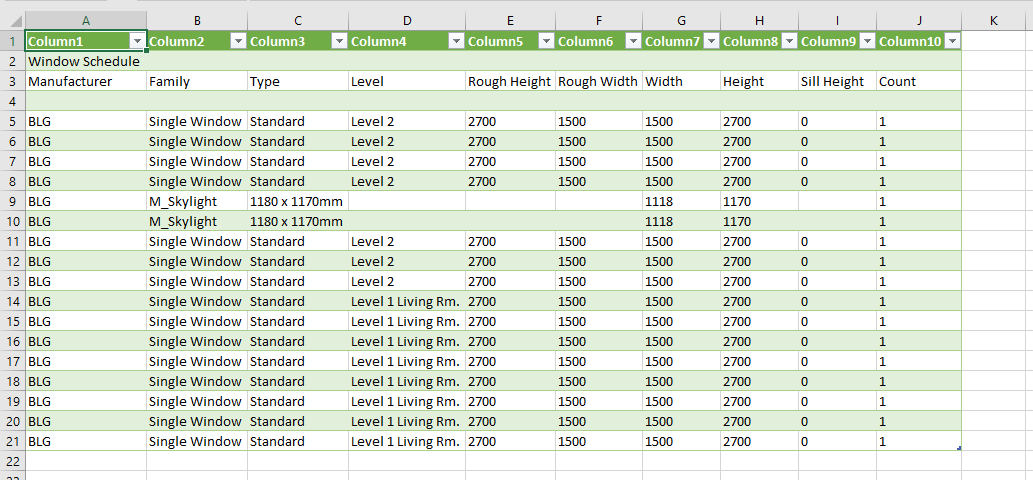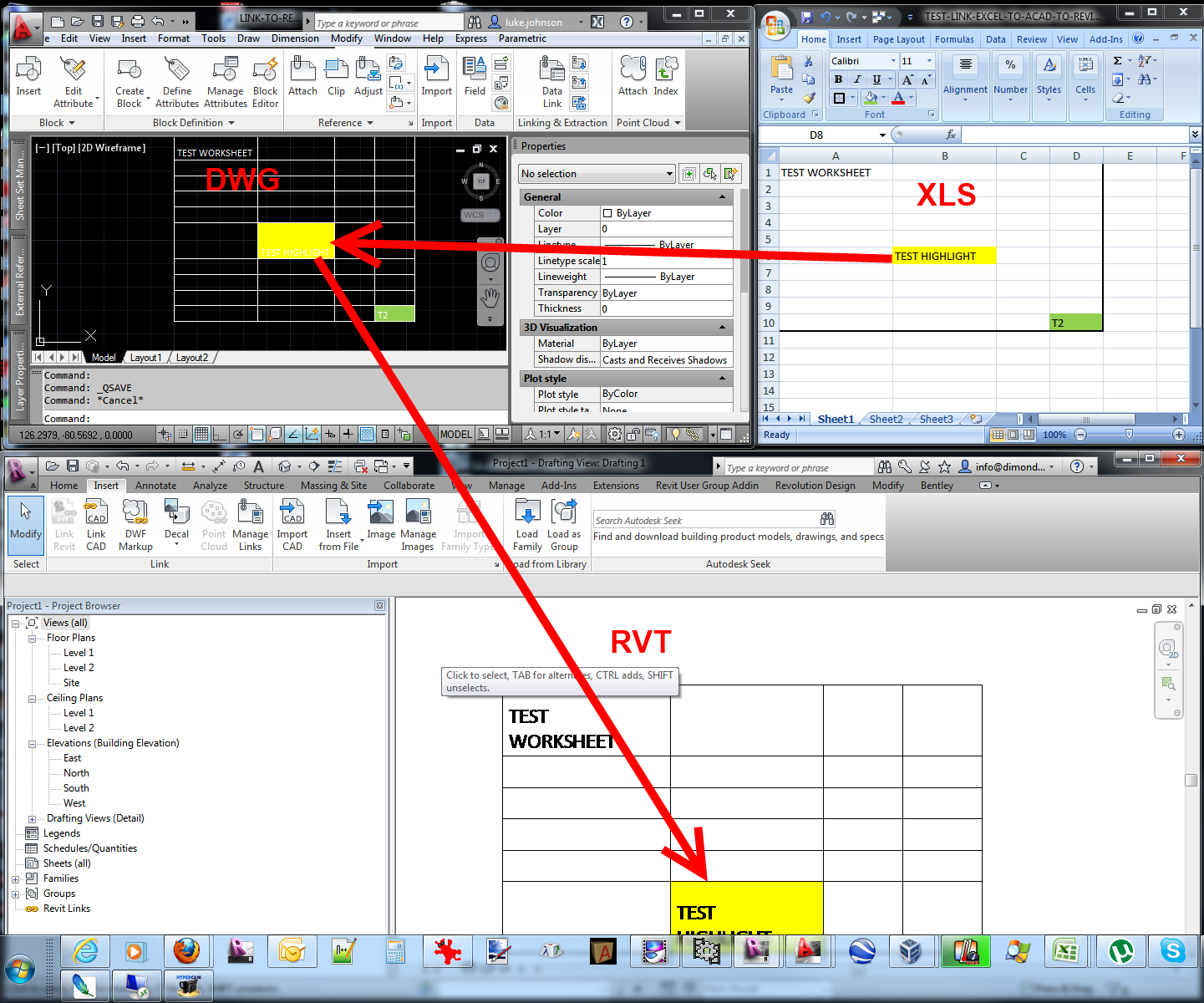Seamlessly Import Excel into Revit: Boost Your Performance
Wiki Article
Revit Excel Combination Demystified: Simplifying Workflows for Improved Task Coordination
Look no additionally, since Revit Excel Assimilation is below to debunk the procedure and simplify your tasks. In this write-up, we will certainly lead you via the relevance of Revit Excel Assimilation, reveal you exactly how to enhance process, and supply finest methods for successful integration.The Importance of Revit Excel Integration
You need to recognize the importance of Revit Excel combination to properly streamline your process and boost project coordination. The combination of Revit, an effective structure information modeling (BIM) software, with Excel, a commonly used spreadsheet program, gives numerous benefits for architects, engineers, and building specialists.

By integrating Revit with Excel, you can eliminate manual data entry and decrease the danger of mistakes. This not only saves time but also ensures accuracy in your project documentation. You can update data in Excel, and it will automatically upgrade in Revit, keeping uniformity throughout your task.
In Addition, Revit Excel assimilation boosts task sychronisation by allowing efficient partnership among team participants. With information integrated between Revit and Excel, everybody can access the most current details and interact perfectly. This promotes smoother interaction, minimizes disputes, and boosts total job effectiveness.
How to Simplify Workflows With Revit Excel Assimilation
Enhance your process by flawlessly linking Revit and Excel to improve your workflow. By incorporating these two effective devices, you can enhance task sychronisation and improve performance in your work. With Revit Excel integration, you can quickly transfer information between both platforms, permitting smooth communication and cooperation.

Another benefit of Revit Excel integration is the capability to develop customized records and analyze data extra efficiently. With Excel's durable features, you can do advanced computations, develop graphes and graphs, and create extensive records based upon the data from your Revit models. This enables you to make and gain beneficial insights notified decisions throughout the task.
Enhancing Task Coordination With Revit Excel Integration
By effortlessly attaching your layout software with powerful data analysis tools, you can considerably boost the control of your projects. Revit Excel integration allows you to improve your process and enhance job sychronisation by getting rid of hand-operated information access and lowering mistakes. With this assimilation, you can conveniently move information in between Revit and Excel, making certain that all task details depends on day and precise.One of the essential benefits of Revit Excel integration is the ability to import and export data in between the 2 software program flawlessly. This suggests that you can conveniently import existing task information from Excel into Revit, saving you time and effort in re-entering details. In a similar way, you can export task information from Revit to Excel, enabling you to carry out advanced evaluation and estimations utilizing the powerful features of Excel.
Additionally, Revit Excel integration allows you to produce dynamic web links between the two software application (import excel into revit). This indicates that any adjustments made in Revit will instantly update in Excel, and the other way around. This makes sure that all project stakeholders are dealing with the most current info, improving job coordination and lowering the danger of mistakes
Overcoming Obstacles in Revit Excel Combination
When conquering obstacles in the assimilation of Revit and Excel, it's crucial to make certain seamless information transfer and reduce mistakes. One common obstacle is the compatibility of data styles between Revit and Excel. To tackle this, you can utilize plugins or add-ins that facilitate the conversion of data from one layout to another. These devices aid preserve the honesty of the data during the transfer procedure.One more obstacle is the lack of synchronization between Revit and Excel. It's critical to establish a clear workflow that makes sure both systems are upgraded in real-time. This can be achieved by utilizing cloud-based partnership devices or developing a system for regular data syncing.
Taking care of huge datasets can also be bothersome. When it comes to managing huge quantities of information, revit and Excel have various capacities. To conquer this obstacle, you can divide the information right into smaller sized, manageable chunks or use data filtering techniques to concentrate on specific areas of passion.
Last but not least, human mistake can bring about disparities in between Revit and Excel information. It is necessary to educate group participants on the combination process and establish quality control measures to capture any kind of mistakes. Routine audits and cross-checks can assist determine and correct any inconsistencies.
Ideal Practices for Effective Revit Excel Combination
To make sure successful integration of Revit and Excel, it is essential to adhere to some finest methods that will aid simplify your process and reduce errors. Primarily, constantly start by developing a orderly and clear folder structure for your task data. When required, this will make it top article easier to situate and update the essential data. Additionally, when connecting Excel data right into Revit, ensure that the information is totally free and tidy from any format issues that can cause mistakes. Use constant naming conventions for your Excel columns and worksheets to prevent complication.One more vital practice is to consistently update your Excel data in Revit. This can be quickly attained by developing a clear process for updating the linked information. Make it a behavior to review and update the data at routine periods, specifically when changes are made to the project. This will assist maintain your information exact and up to date.

Verdict
So, there you have it - revit Excel assimilation does not have to be a difficult task. With revit Excel assimilation debunked, you'll be well on your way to making the most of the possibility of these tools and taking your projects to brand-new heights.You can export your Revit schedules to pop over here Excel, make adjustments or updates in Excel, and after that import the updated information back into Revit with simply best site a couple of clicks. Revit Excel integration permits you to improve your workflows and boost project control by getting rid of manual information entry and lowering errors. With this assimilation, you can quickly move data in between Revit and Excel, making sure that all project info is up to day and precise.
You can export task data from Revit to Excel, permitting you to carry out innovative analysis and estimations using the effective attributes of Excel.
Additionally, when linking Excel data right into Revit, make certain that the data is tidy and free from any type of format issues that might create errors.
Report this wiki page